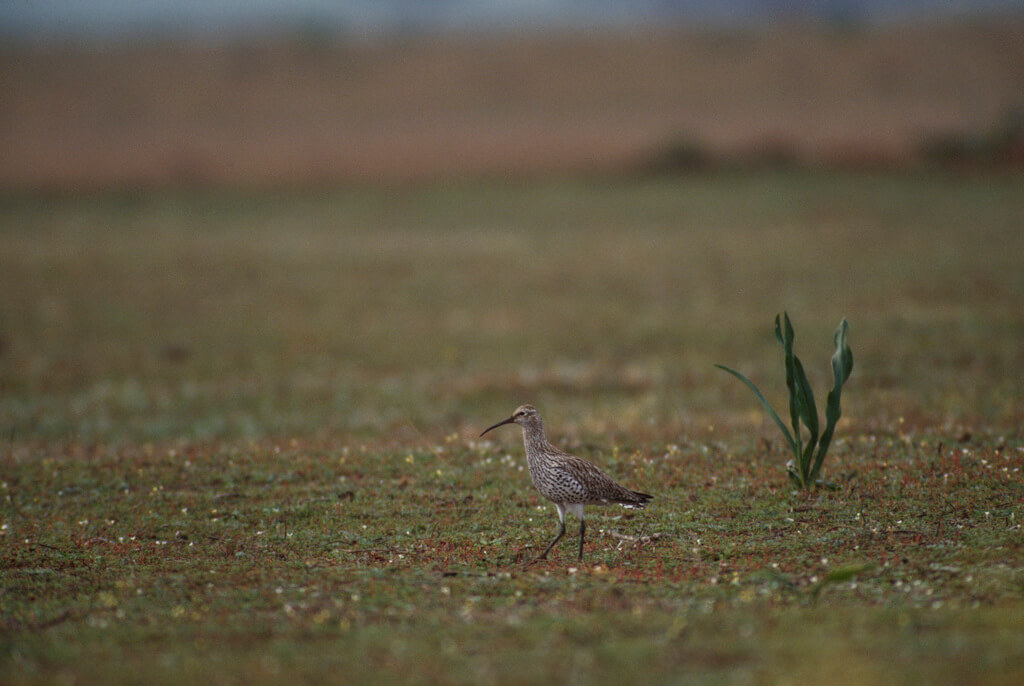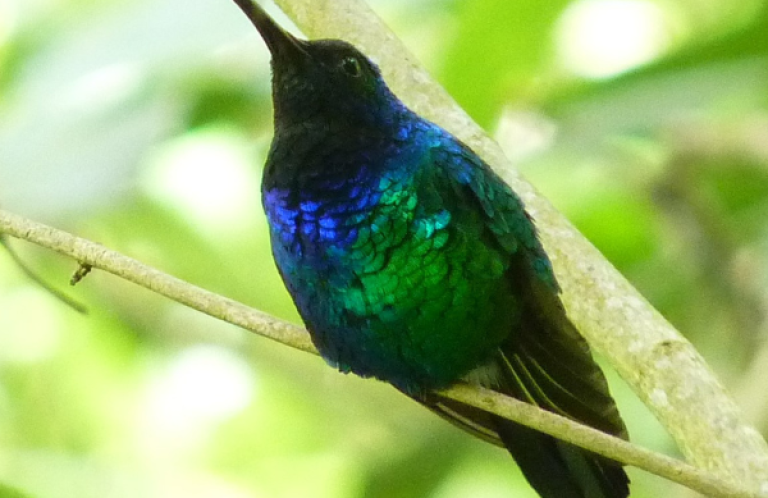Lost Forever: The Slender-billed Curlew is Extinct

There have recently been some incredible stories of lost birds being rediscovered. The Black-naped Pheasant-Pigeon was photographed after 126 years, the Santa Marta Sabrewing was found after 76 years, the New Britain Goshawk was documented for the first time in 55 years, to name a few. Sadly though, not all lost birds can be rediscovered.
This reality is highlighted by the recent publication of a study led by scientists at the Royal Society for the Protection of Birds, BirdLife International, Naturalis, and Natural History Museum London, concluding that the Slender-billed Curlew (Numenius tenuirostris) is extinct. Previously considered Critically Endangered, this elegant shorebird once bred in central Asia and south Siberia and wintered in wetlands around the Mediterranean basin and Arabian Peninsula. Migrating Slender-billed Curlews passed through central and eastern Europe turning up at locations in Hungary, Italy, Germany, and the Netherlands, among others.*
Last documented in 1995, the curlew was a lost bird that had been missing for 29 years.
As the study authors describe, it is difficult to pinpoint a single variable that precipitated the curlew's decline. More than likely, it was a combination of factors. Agricultural expansion reduced habitat on the breeding grounds and in migratory stopover sites. Wetlands on the wintering grounds were drained and depleted. Migrating birds were shot by hunters. Like other curlew species, Slender-billeds were long-lived and slow to reproduce making it hard for their populations to recover.
If this all sounds familiar, it is because it is. Nearly all North American shorebird species are declining. More than half of them have lost over 50 percent of their population in the past 40 years. Globally, widespread species like Dunlins (Caldris alpina) and Black-bellied Plovers (Pluvialis squatarola) are now considered Threatened or nearly so. Four of the seven remaining curlew species are Threatened or Near Threatened. The Eskimo Curlew (Numenius borealis), the Western Hemisphere's version of the Slender-billed, is ‘Critically Endangered (possibly Extinct)' (last documented in Barbados in 1963, the Eskimo Curlew remains a lost bird for now, but the prospects of a rediscovery seem vanishingly slim.) Across the board, varying combinations of those same factors that impacted the Slender-billed — habitat loss, disturbance, hunting — are likely to blame for these drops in shorebird populations.
Whatever the specific cause of the Slender-billed Curlew's disappearance, its numbers were dropping noticeably by the start of the 20th century. A 1912 report noted that the species was declining and, by the 1940s, the population was low enough that there were concerns that it could go extinct. In 1988, it was listed as Threatened. In 1995, the last documented individuals were photographed in the Merja Zerga wetlands along the Atlantic coast of Morocco. A year later, in 1996, a conservation action plan for the curlew was developed. Too little, too late.
Sometimes extinct species can seem like they belong to a distant past where they inhabited environments that no longer exist. But part of what stands out about the curlew's story is how recent it feels. There are color photographs and even videos of Slender-billed Curlews. The birds were seen at locations that are still regularly visited, like Merja Zerga, and some of those places probably do not look much different now from how they did 30 or 40 years ago when the last curlews were there. Many people birding today saw Slender-billed Curlews. Many others probably imagined it as a bird they could potentially see.
What can conservationists take away from this news about the curlew? For one, it is a depressing reminder that birds everywhere are at risk. The Slender-billed Curlew is the first recorded extinction of a bird species from mainland Europe, a region not known for its avian extinctions. As Alex Berryman, Red List Officer at BirdLife International, and a co-author of the study points out: “The rate of continental extinctions is increasing, and urgent conservation action is desperately needed to save birds. Without it, we must be braced for a much larger extinction wave washing over continents.” Not good news. On continents, grassland birds and migratory shorebirds, both categories relevant to the curlew, are among those most at risk.
Second, the curlew reminds us that conservation needs to be proactive. As the authors point out, the best chance to implement a conservation plan for the curlew, if there was one, was when those first calls for action were made in the 1940s, rather than in 1996, one year after what would turn out to be the last documented record. Are there species starting to decline now that in 50 years we will wish we took more action on? The dramatic drops in the populations of multiple shorebird species certainly suggests there could be. If anything, this news about the Slender-billed Curlew emphasizes that these declines need to be taken seriously and that measures to help improve populations need to start sooner rather than later.
From a Search for Lost Birds perspective, this paper is also an important case study in the value of determining whether a lost species is extinct. Trying to find lost birds is difficult, but proving that one is not there can be even harder, especially for wide-ranging species like the Slender-billed Curlew. How can we be certain there isn't a flock of curlews breeding in an isolated region of southern Siberia and passing undetected along a migration route where there are no birdwatchers to notice them? In reality, it is impossible to be absolutely certain. Instead, we need to make the best possible estimate with the given data, something this new study accomplishes by modeling a combination of threats, survey effort, and the distribution of records over time. This is complicated and works better in areas with lots of data, like continental Europe. Determining extinction will be harder but no less important to do for some of the lost birds in areas with fewer observers and harder to measure threats. This is grim work. Settling on the conclusion that a species is extinct can feel like it goes against our feelings of optimism and hope. Fail to acknowledge that some birds are gone, however, and we run the risk of spending resources on species that are no longer there and missing the true scale of the extinction crisis.
It is hard to find a silver lining in news like this, but if there is one, maybe it is that sometimes bad news can help trigger actions. The catastrophic declines of herons and egrets for the plume trade in the early 20th century prompted conservation legislation and the creation of new conservation organizations in Europe and North America. Public response to disappearing populations of raptors and songbirds helped lead to legislation outlawing the use of DDT. Maybe, the Slender-billed Curlew can also help inspire conservation actions. For the 120 lost birds now remaining on the lost birds list it feels more urgent than ever to try to find them while we still can.
For information on steps you can help take to prevent declines in shorebirds and other species, see American Bird Conservancy's 3 Billion Birds page: More details on the Slender-billed Curlew are available on its Birds of the World profile.
The paper “Global extinction of the Slender-billed Curlew (Numenius tenuirostrsis)” by G. M. Buchanan, B. Chapple, A. J. Berryman, N. Crockford, J. F. F. J. Jansen, and A. L. Bond is published in the journal Ibis and is available open access online.
*An exceptional record of a Slender-billed Curlew from Ontario, Canada, in 1925, though intriguing, seems to be questionable.
This article was originally published on SearchforLostBirds.org, a global partnership between American Bird Conservancy, Re:wild, and BirdLife International.
###
American Bird Conservancy (ABC) takes bold action to conserve wild birds and their habitats throughout the Americas. Inspired by the wonder of birds, we achieve lasting results for the bird species most in need while also benefiting human communities, biodiversity, and the planet's fragile climate. Our every action is underpinned by science, strengthened by partnerships, and rooted in the belief that diverse perspectives yield stronger results. Founded as a nonprofit organization in 1994, ABC remains committed to safeguarding birds for generations to come. Join us! Together, we can do more to ensure birds thrive.
Media Contact
Jordan Rutter
Director of Communications
media@abcbirds.org


















































